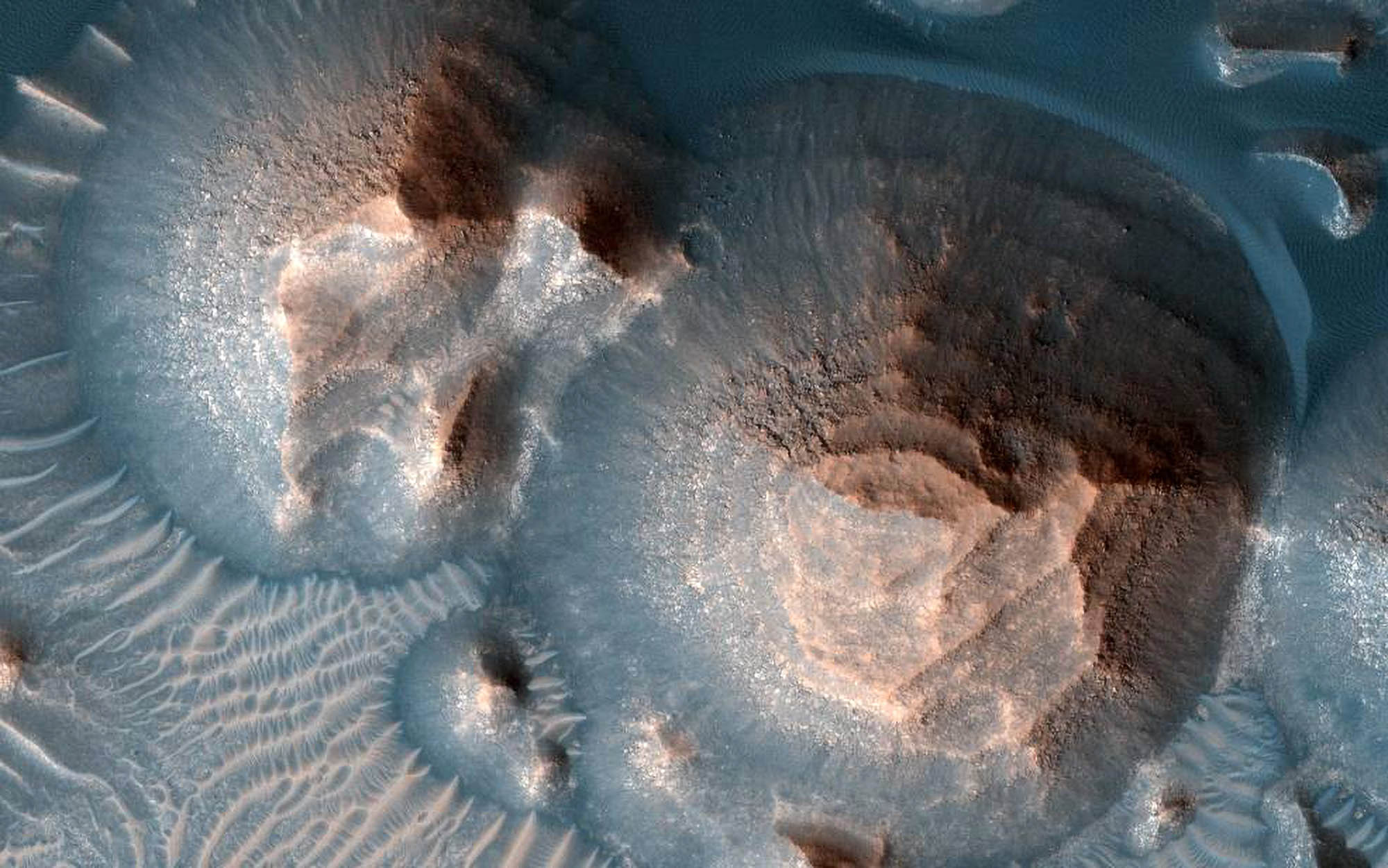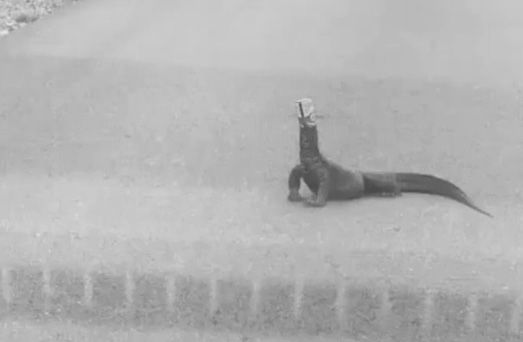Thousands of the most powerful type of volcanic eruptions classified as so called “super-eruptions” occurred on Mars during an extremely volatile 500-million-year period in the history of the red planet over 4 billion years ago, releasing important gases such as water vapour and carbon dioxide into the atmosphere.
The eruptions would have been astonishingly powerful with the most recent comparable event on earth being the eruption of the Toba Caldera Complex 75,000 years ago in Northern Sumatra, which led to a 10 year-long global volcanic winter.
NASA announced in a statement yesterday (15th September) that a team of scientists found evidence showing that a region of northern Mars called ‘Arabia Terra’ experienced thousands of volcanic eruptions four billion years ago which sent water vapour, carbon dioxide, and sulfur dioxide high into the atmosphere.
Patrick Whelley, a geologist at NASA’s Goddard Space Flight Center in Greenbelt, Maryland, who led the Arabia Terra analysis, said: “Each one of these eruptions would have had a significant climate impact — maybe the released gas made the atmosphere thicker or blocked the Sun and made the atmosphere colder.”
He added: “Modelers of the Martian climate will have some work to do to try to understand the impact of the volcanoes.”
After a super eruption occurs the equivalent of 400 million Olympic-size swimming pools of gas and molten rock are fired from the surface creating a thick ash cloud thousands of miles in the sky.

Following the eruption, the volcano collapses into a giant hole called a ‘caldera’ often stretching dozens of miles across.
NASA said: “Seven calderas in Arabia Terra were the first giveaways that the region may once have hosted volcanoes capable of super-eruptions.”
Initially, the ‘calderas’ were mistaken for craters created by asteroid impacts, but this theory came into doubt in 2013 when scientists first proposed the theory that the craters were actually ‘calderas’.
Whelley said: “We read that paper and were interested in following up, but instead of looking for volcanoes themselves, we looked for the ash, because you can’t hide that evidence.”
The research team used NASA’s Mars Reconnaissance Orbiter to study what they suspected were calderas left behind by super-eruptions hundreds of millions of years ago.
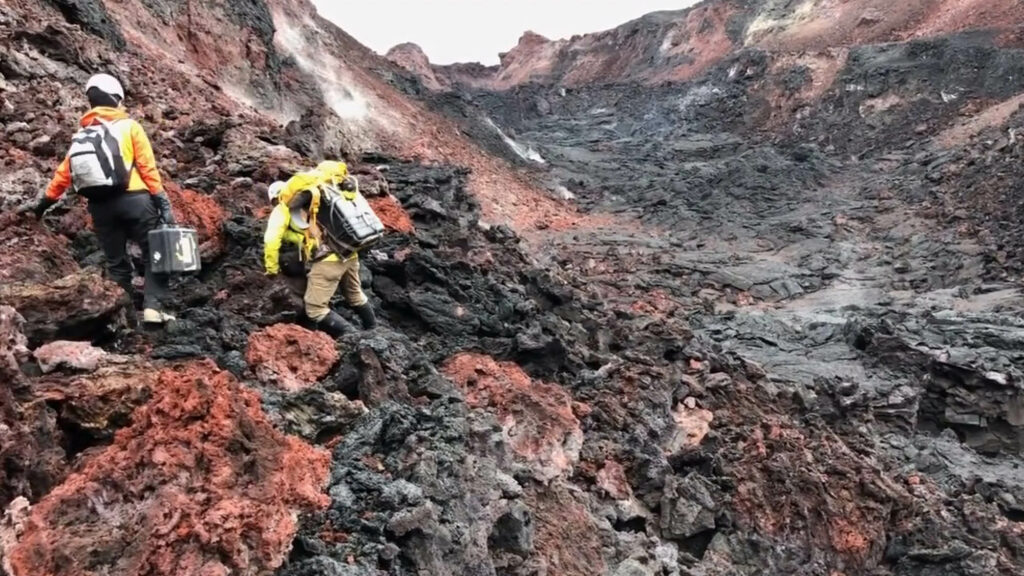
The team followed up earlier research studies that had suggested the mineral deposits on the surface of Arabia Terra were created by volcanic eruptions.
Alexandra Matiella Novak, a volcanologist at the Johns Hopkins Applied Physics Laboratory in Laurel, Maryland, said: “So we picked it up at that point and said, ‘OK, well these are minerals that are associated with altered volcanic ash, which has already been documented.”
He went on: “Now we’re going to look at how the minerals are distributed to see if they follow the pattern we would expect to see from super-eruptions.”
The team used images from the Compact Reconnaissance Imaging Spectrometer to identify minerals on the planet’s surface.
They scanned canyons and craters hundreds of thousands of miles from the calderas suspecting that wind had carried the ash from the volcanic eruptions.
They then created a three-dimensional image of Arabia Terra layering mineral data over the topographic maps of the canyons and craters analyzed.
They found that the mineral-rich deposits of ash were very well preserved.
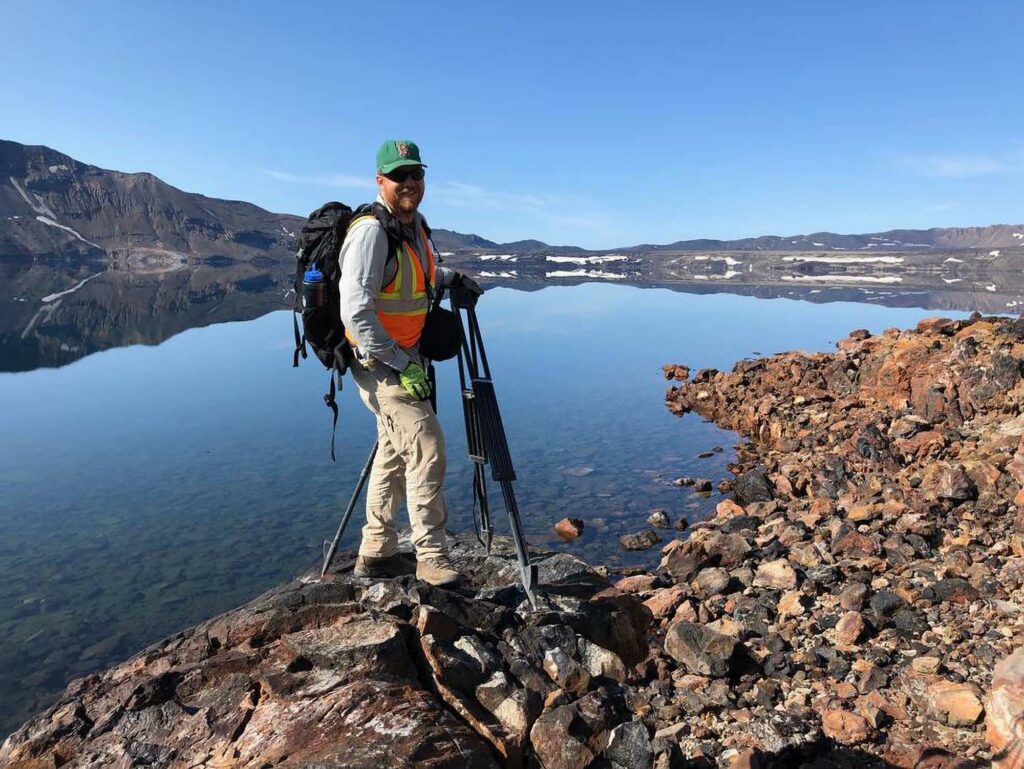
Jacob Richardson, a geologist at NASA Goddard who worked with Whelley and Novak, said: “That’s when I realized this isn’t a fluke, this is a real signal.”
She added: ” We’re actually seeing what was predicted and that was the most exciting moment for me.”
The team then calculated how many eruptions would have been necessary to produce the amount of minerals they found and the conclusion they came to was thousands.
The scientists are baffled by the fact that so many ‘super volcanos’ were concentrated in one region of mars whilst on earth they are sparsely dotted across the planet.
NASA’s statement said that: “It’s possible that super-eruptive volcanoes were concentrated in regions on Earth but have been eroded physically and chemically or moved around the globe as continents shifted due to plate tectonics.”
Researchers hope that further studies will reveal how the eruption affected the development of the Martian climate.
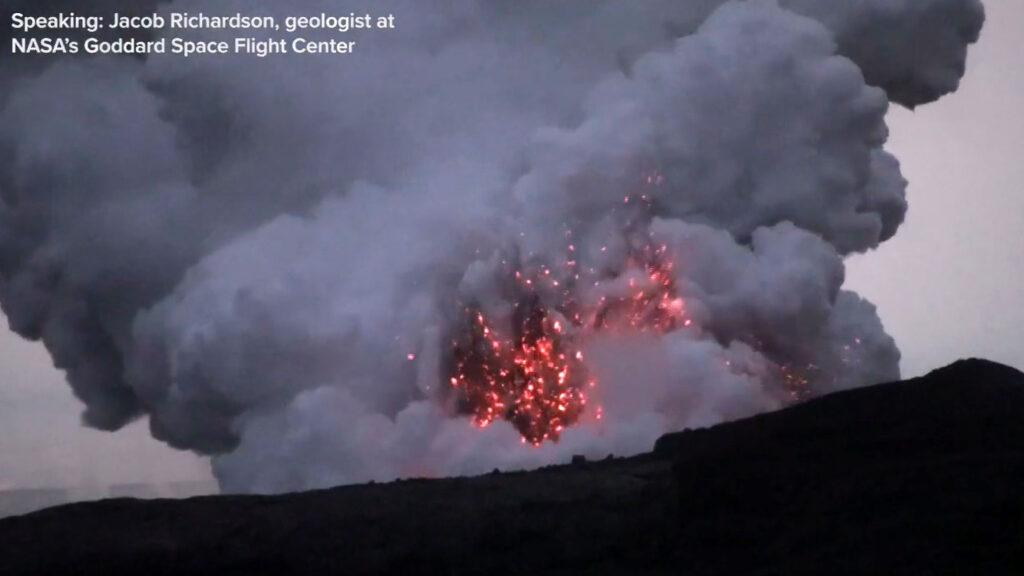
To find out more about the author, editor or agency that supplied this story – please click below.
Story By: Peter Barker, Sub-Editor: James King, Agency: Newsflash
The Ananova page is created by and dedicated to professional, independent freelance journalists. It is a place for us to showcase our work. When our news is sold to our media partners, we will include the link here.

